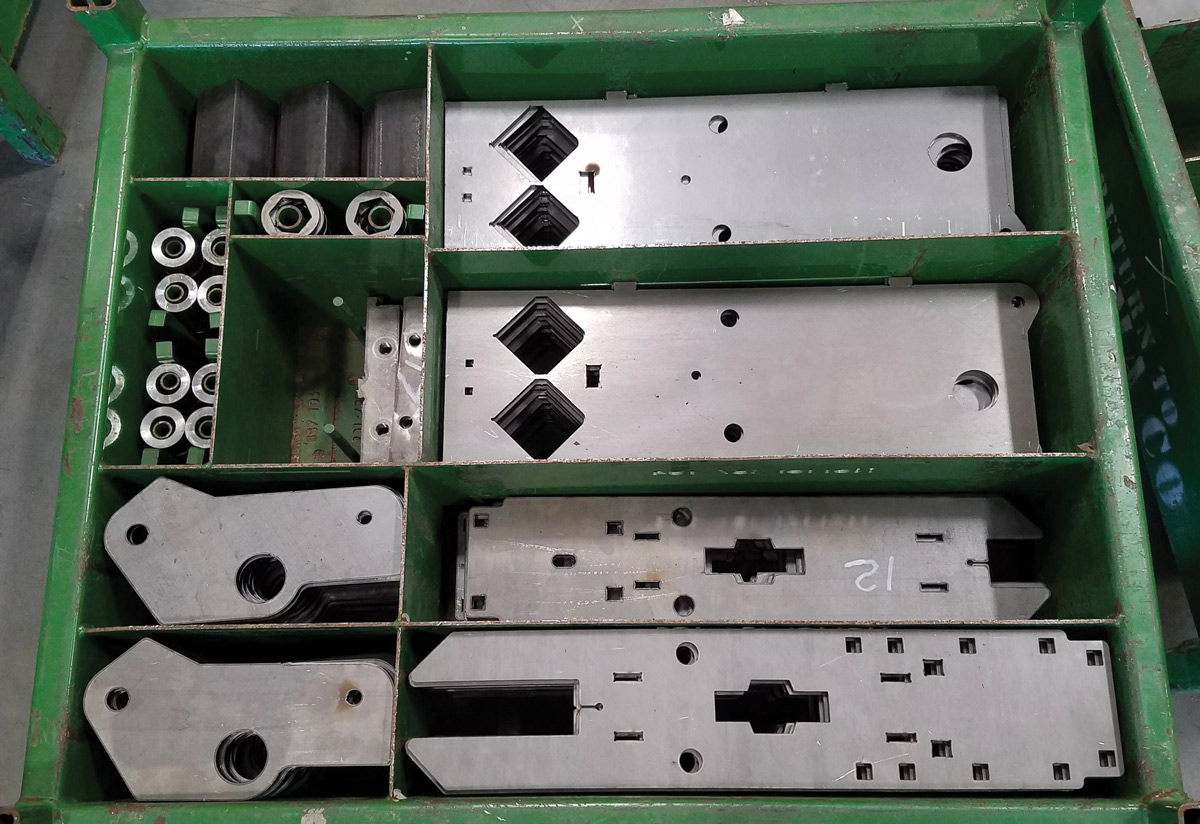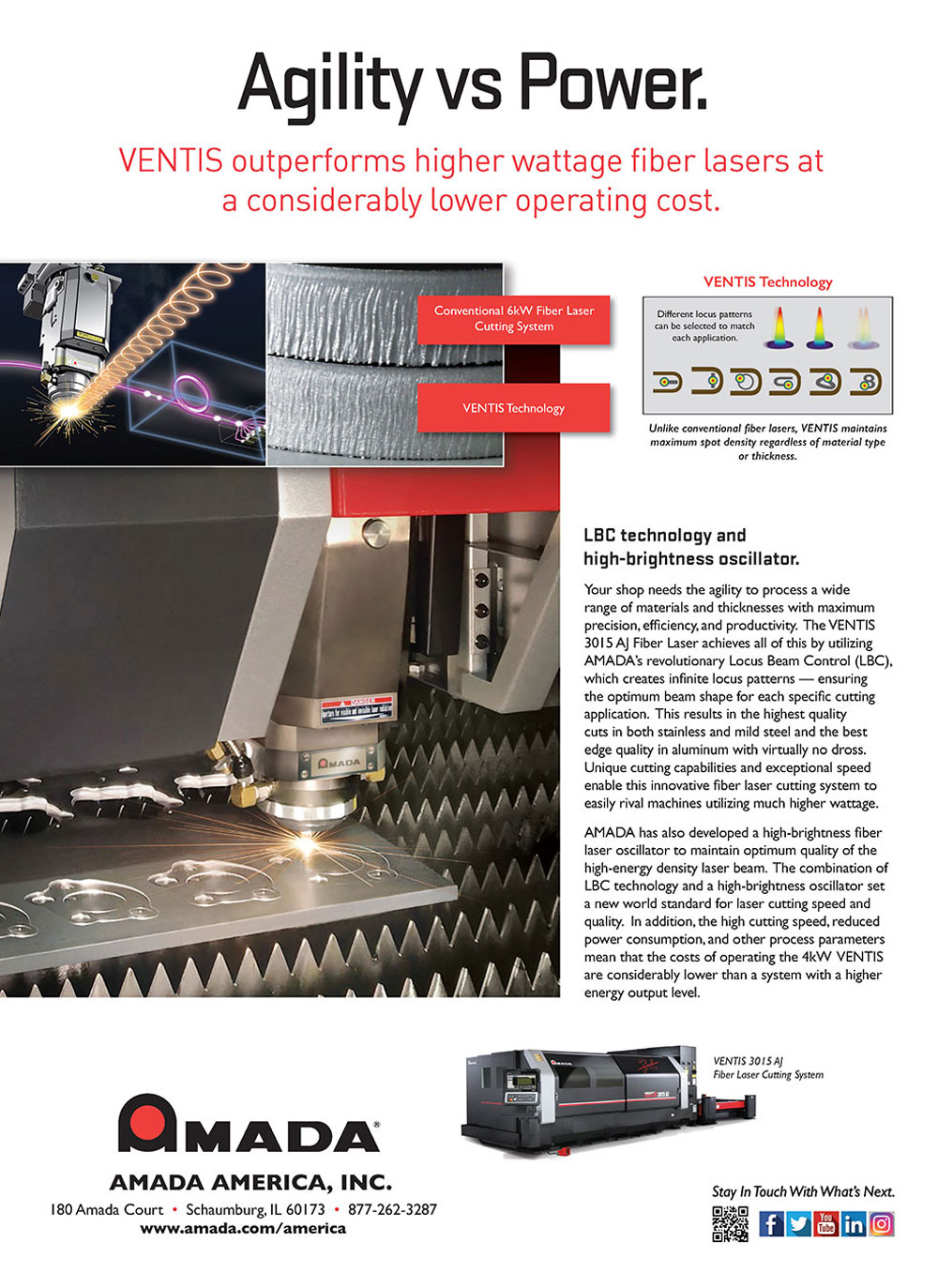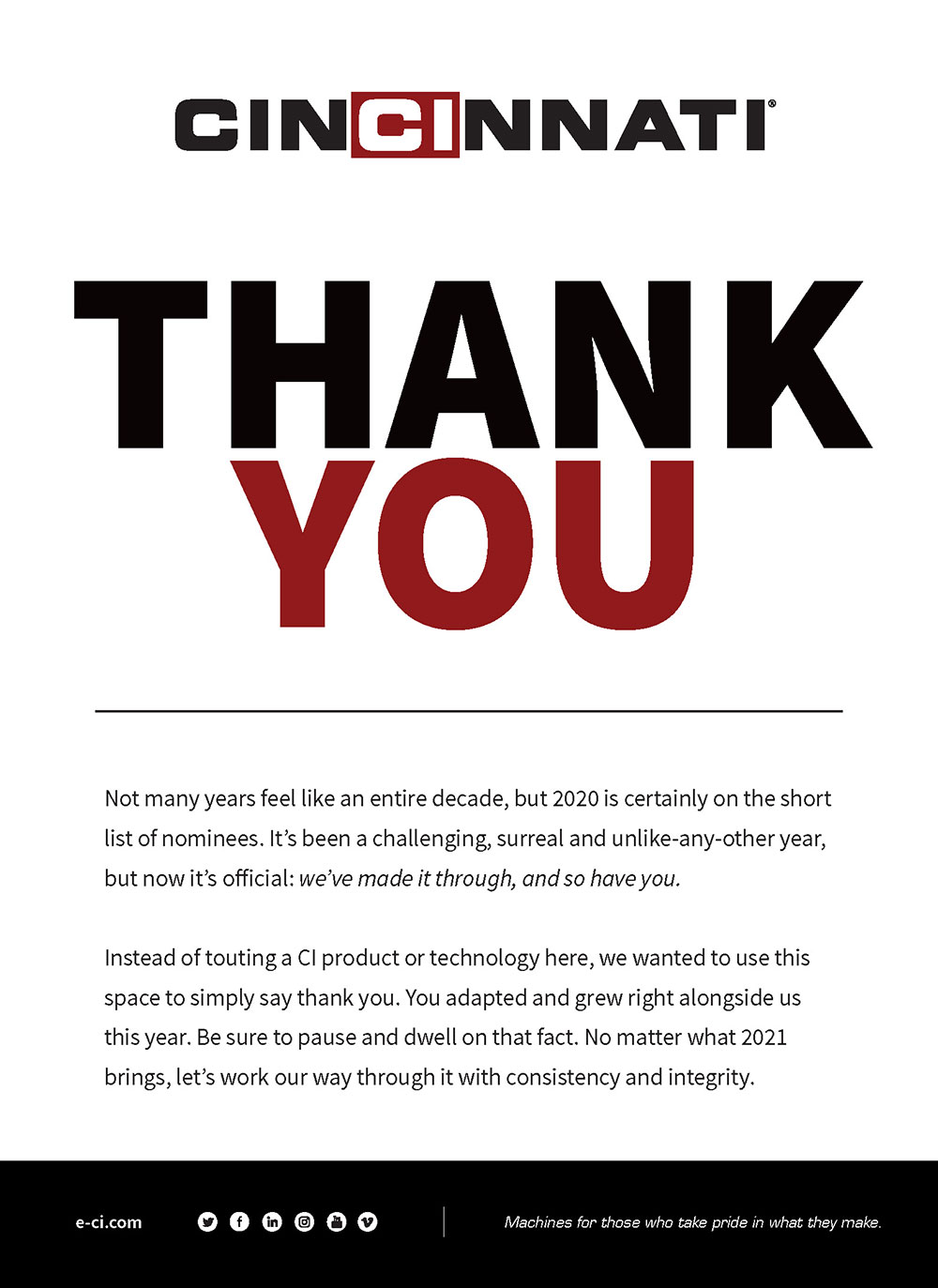ground
ground
ground
 N
Necessity is the mother of invention.” This proverb is an apt description of Orthman Manufacturing Inc. The Lexington, Nebraska, company has a string of inventions under its belt including its 1tRIPr strip-tillage system, which allows farmers to perform ideal seedbed preparation, precision nutrient placement and optimal root zone conditioning in one pass. Today, the company produces a range of agricultural equipment for OEMs like John Deere, as well as conveying systems for the food, chemical, power and manufacturing industries.
In 2012, growth prompted Orthman Manufacturing to think about expanding its plant and investing in new equipment, including a fiber laser. “Part of our strategy with the fiber laser investment was to make the new plant, which we dedicated to agricultural products, self-sufficient,” says Orthman Manufacturing’s President, Ward Jorgenson. In-depth research led the manufacturer to Mazak Optonics Corp, but purchase plans were idled until Orthman Manufacturing opened its new 115,000-sq.-ft. production plant in 2016. By 2018, the company was outsourcing $2.5 million in laser-cut parts, in addition to other parts its fabrication shop couldn’t process.
“We have great suppliers that have taken care of us for many years and still do a great job of supporting us with other components today,” says Jorgenson. “But when buying this volume of parts, you are paying someone else to invest in their equipment. It was the right time to invest in our own equipment. We went through the research process all over again. We visited manufacturers to see their equipment and evaluate them.” The company determined that a Mazak fiber laser with automation was the best fit due to its competitive pricing and customizable automation.
“In hindsight, I am thankful we did not purchase a fiber laser the first time around,” Jorgenson says. “At the time, 6 kW was the maximum power available. Our application is not sheet metal. The majority of the material we process is plate from 0.25 in. to 1 in. We needed power to cut as much plate as we could. An 8 kW or 10 kW fiber laser with automation made sense for our production needs.”

 With the fiber laser’s cutting accuracy we were able to eliminate a secondary drilling operation.
With the fiber laser’s cutting accuracy we were able to eliminate a secondary drilling operation. 
Orthman Manufacturing ordered a Mazak Optiplex Fiber III 8 kW fiber laser. But after a trip to Japan in May 2019, Jorgenson had a change of heart. While touring the Optonics factory, Minokamo Plant 1, a presentation about high-power fiber lasers and high-pressure compressed air cutting caught his attention.
“With high pressure air cutting, we could cut up to ⅜ in. with air instead of using nitrogen,” Jorgenson says. “We scrapped plans to use nitrogen, even though we had already poured the concrete pad for the tanks. We decided to upgrade our original 8 kW fiber laser order to a 10 kW fiber laser paired with a high-performance dry air system.”
Orthman Manufacturing also sourced a Mazak M-Series automation system tailored to its needs. The company didn’t have a lot of floor space and limited ceiling height. The M-Series offered a compact footprint while optimizing the manufacturer’s ceiling height with a 20-shelf tower.
“We were also interested in being able to run the machine lights out, so we chose over/under cars that can hold 6,600 lbs. each,” Jorgenson says.
Orthman Manufacturing’s employees were inexperienced with laser operation, so they underwent training on the machine, which has reaped a number of benefits for the company.
“Our parts have lots of holes, but they don’t require drill accuracy,” says Jorgenson. “With the laser’s cutting accuracy, we were able to eliminate a secondary drilling operation on a lot of the parts we make.”
“A hole-cutting operation means a lot of piercing,” says Tim Tapper, applications manager at Mazak Optonics. “The high power Optiplex Fiber 10 kW fiber laser offers piercing techniques that can also improve overall nest cycle times. With a 6 kW fiber laser, you can pierce 1-in.-thick mild steel in three seconds. With the 10 kW, it takes less than a second to pierce 1-in. mild steel. This is important for full nest times because if you are cutting and piercing a large number of parts or your parts have a lot of features, you will see a dramatic reduction in your nest’s cutting time.”
Cutting with high-performance air versus nitrogen is helping Orthman Manufacturing decrease costs. The automated fiber laser has improved throughput and reduced non-value-added time that can occur with loading and unloading the material by hand.
“We have started to have some real success with this automation, and we are just getting started with it,” says Jorgenson. “Being able to operate lights out requires us to pick the right parts to process while unattended. We continue to make progress and gain confidence running the system unattended.”
By bringing parts in house, Orthman Manufacturing reduced its inventory and its reliance on suppliers. “When you are working with a supplier, you are buying components further out and have more inventory in the supply chain,” Jorgenson says. “We were outsourcing $2.5 million [worth of business] in 2018. We are very fortunate in this agricultural market to have had a couple good years of growth in our business. If we didn’t have a fiber laser, we would be outsourcing nearly $4 million in laser-cut components.”
The ability to cut parts in a dedicated facility also has reduced transportation costs because personnel don’t have to make as many trips back and forth between the original plant and the new factory. These efficiencies are helping Orthman Manufacturing move closer to JIT manufacturing.
“We have a kitting department next to the fiber laser,” Jorgenson says. “That team kits all components for the weldment. The kitting team gets all the parts needed for a weldment, puts them on a table, then rolls that table over to the welding department. Having the fiber laser and kitting next to each other improves operations by having the parts flow right into the kitting department and then to welding.”


